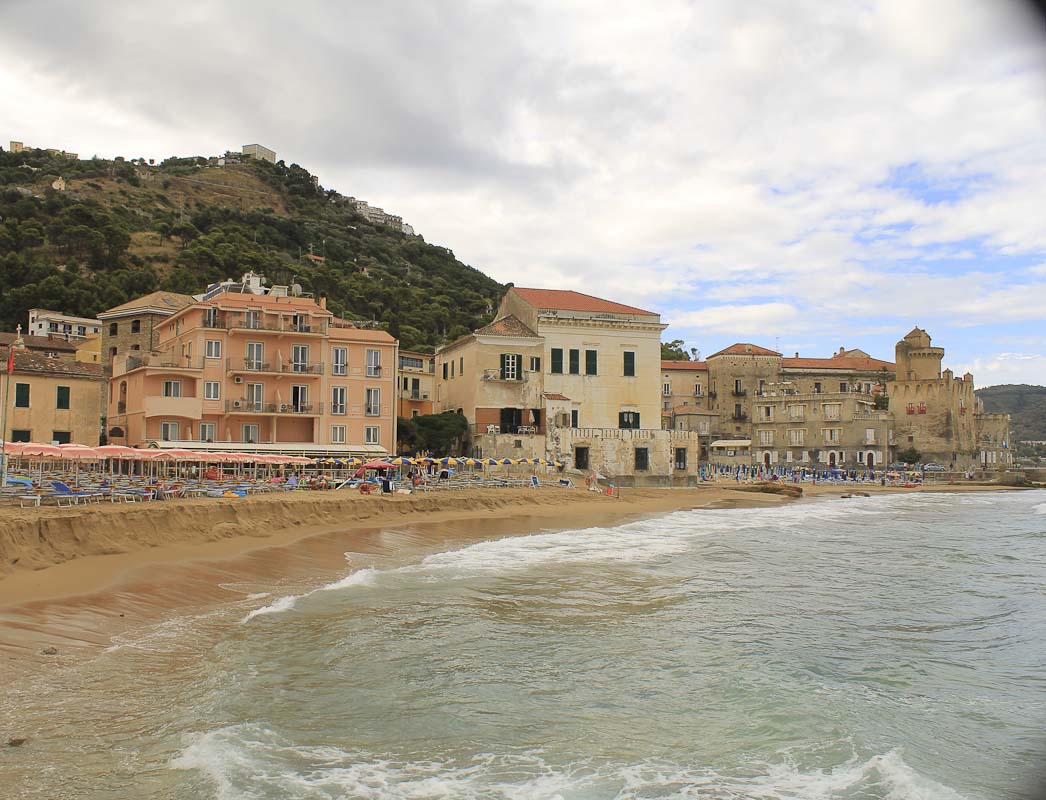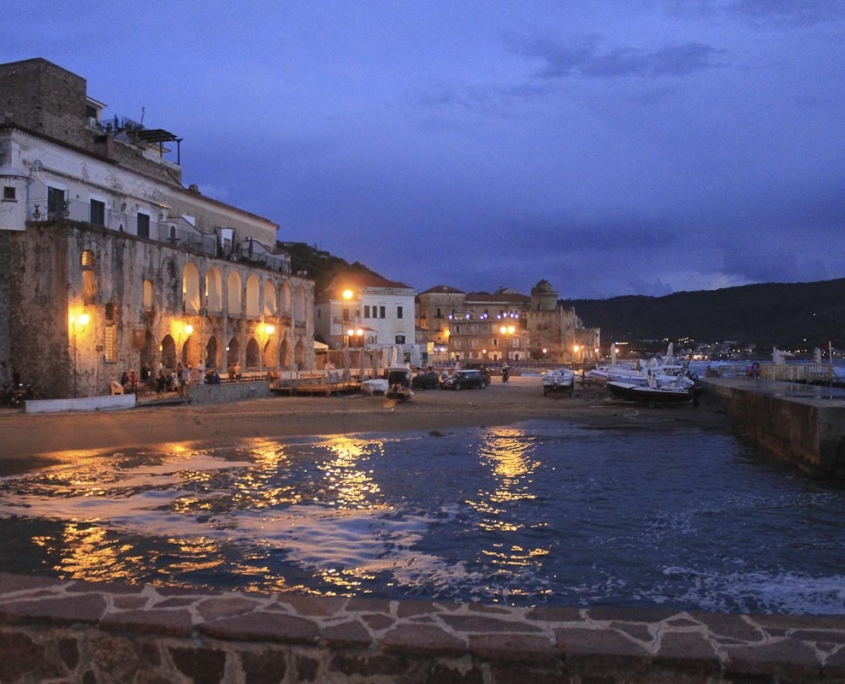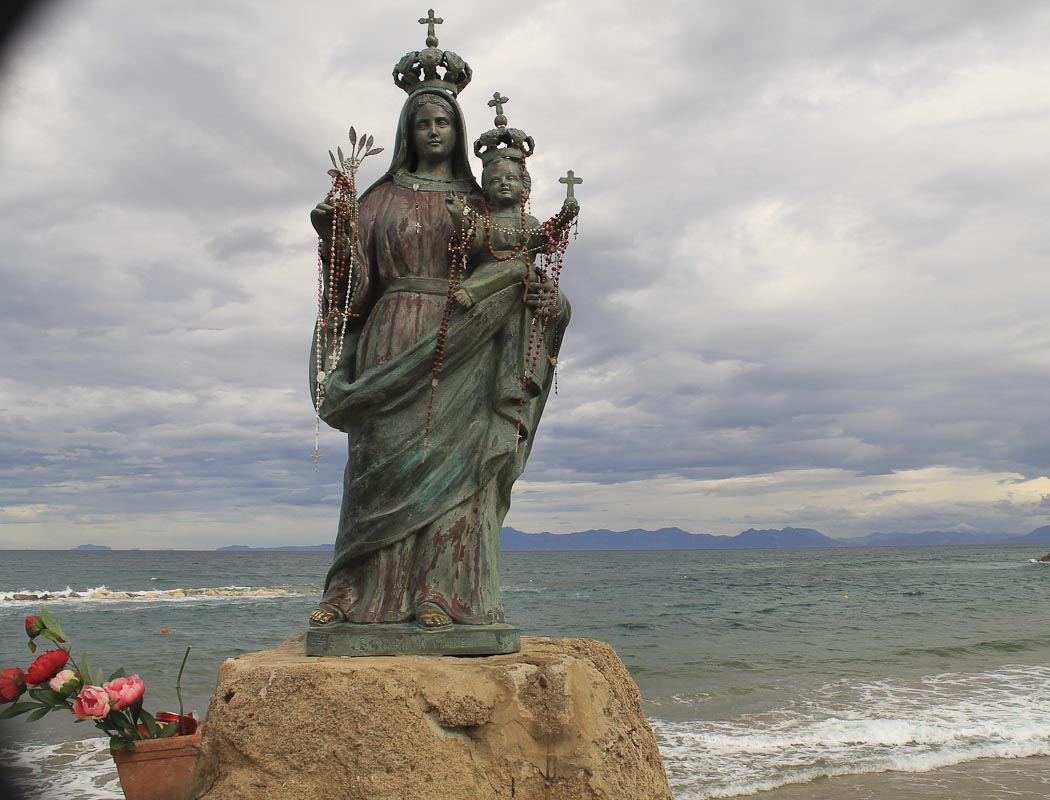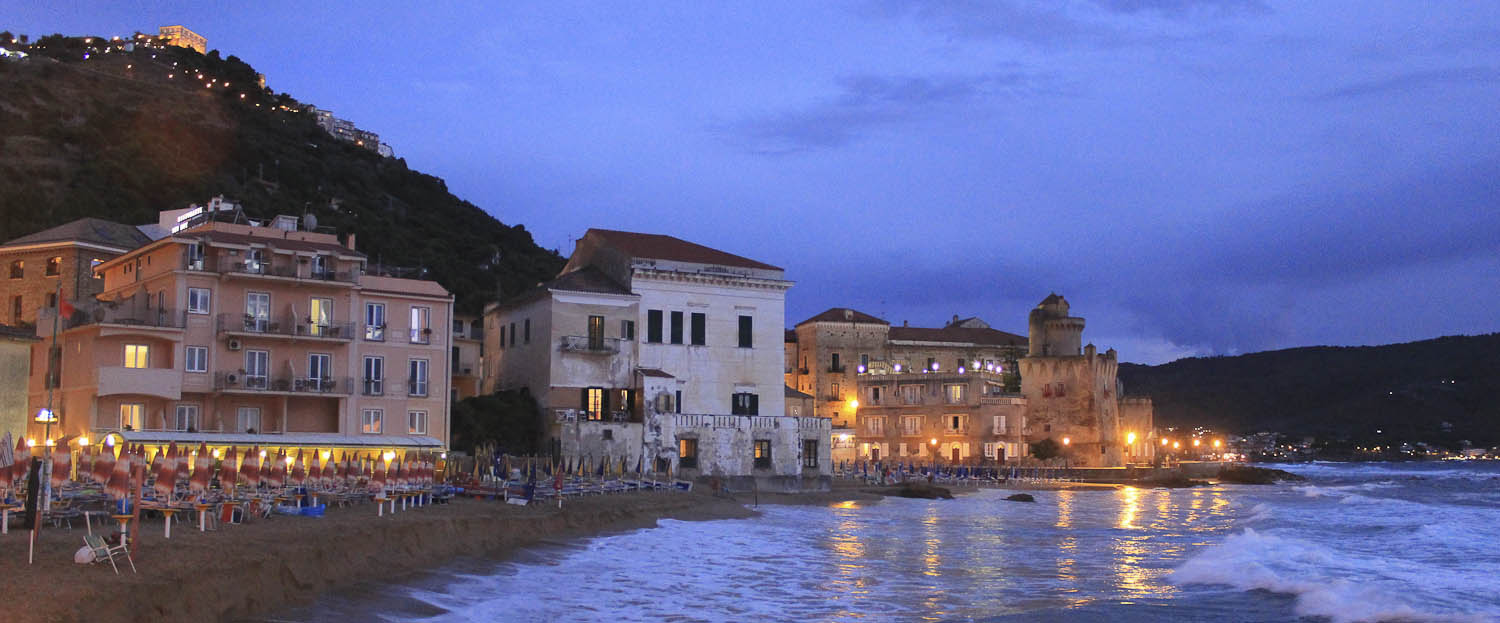Santa Maria di Castellabate Revisited
We visited Santa Maria di Castellabate several times 15-20 ago and the first impression upon returning is how little the town has changed.
Santa Maria di Castellabate is still a paradise for families with young children happy to spend long days playing beach tennis, swimming and building imaginative castles at sandy beaches with calm crystalline waters. You have a stunning view of the tip of the Sorrento peninsula and beautiful sunsets over the island of Capri.

There are beaches right in the centre of Santa Maria di Castellabate
From natural harbour to beach town
Santa Maria di Castellabate was originally a natural harbour sheltered by rocks and used as a fishing village and shipping port for local produce like olive oil, wine and cereals. The harbour was linked to the mediaeval city Castellabate, placed at a safe distance from pirate attacks on a nearby hill. A 12th century port structure with arched warehouses can still be discerned at the Porto delle Gatte, although the buildings have changed use several times over the centuries
In September 1943, during the Second World War, Santa Maria di Castellabate was – according to Wikipedia – one of the scenes of the Salerno landing, and Allied troops occupied the village for several days before advancing towards Rome.
It was not until the seventies the seaside town experienced a boom as an important tourist destination.

The arched warehouses at Porte delle Gatte have been preserved and adapted to new uses.
A place to relax
From campsites along the beach you can stroll into town on a nice seaside promenade, and in the centre there is a grand piazza for running around playing football, watching puppet theatre or listening to open air concerts. In the streets leading up to the piazza there are plenty of cafes for sipping Aperol Spritz and shops selling rubber ducks, swimming belts, inflatable mattresses, limoncello, pizza, gelato and amazing thingies that will glow in the dark when you propel them high up into the air. Everything is exactly as it was at the turn of the millennium.
From a grown up perspective Santa Maria di Castellabate is a place to relax and forget about time managers, dentist appointments and mortgage payments. Few palazzos and old buildings remain in the tiny borgo, but there is one church and two city beaches where you can lounge all day long in a deckchair with a novel under an umbrellone. A motley collection of worthless umbrellas have been planted as territorial flags on the stamp-sized free beach to mark that this area is already occupied.
Some of the old palazzi have been turned into holiday accommodation, and shined up with fresh paint, colourful flowers and more permanent decorative elements like dolphin statues. And then there’s the evocative statue of Madonna and child solemnly honoured by passing Catholics and gifted with an assortment of rosaries.

The Madonna statue plays a central part in the history of Santa Maria di Castellabate. It is celebrated every year at Ferragosto.
If you are looking for a family-friendly alternative to Positano and Amalfi, Santa Maria di Castellabata is definitely worth considering.


 Italian Notes
Italian Notes
Leave a Reply
Want to join the discussion?Feel free to contribute!